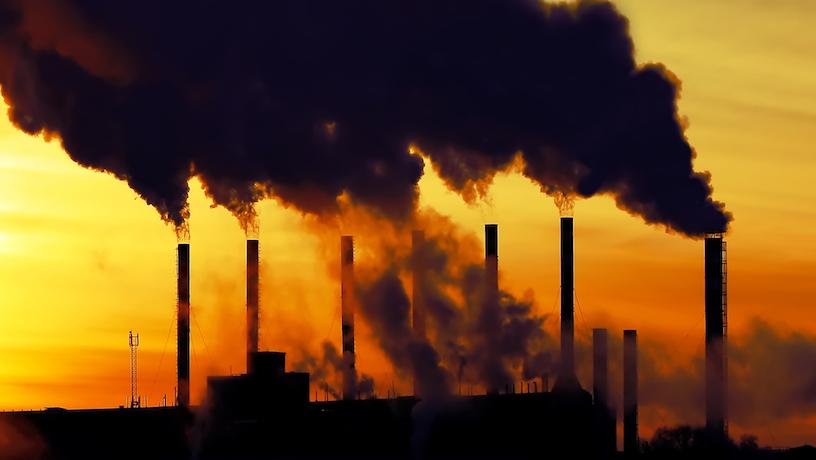Six Ways Our Labs Could Turn CO2 into a Resource
In mitigating climate change, technologies that repurpose or sequester CO2 could prove at least as important as reducing emissions

Even if humanity swore off fossil fuels tomorrow, much of the damage is already done: the hundreds of billions of tons of carbon dioxide thus far pumped into the atmosphere will linger for centuries, continuing to drive climate change. Finding creative means for “negative emissions”—pulling CO2 out of the air and repurposing or sequestering it—could prove at least as important as reducing anthropogenic emissions. Research from our labs could one day soon help make that happen:
Build tables, tools, toys and other tangibles
Prof. Alissa Park has developed CO2-harvesting nanoparticle organic hybrid materials (NOHMs) promising easier production of novel polymers adaptable for almost any area in which conventional plastics are used. NOHMs are composites engineered to combine properties of different materials—sometimes creating notable new qualities in the process; so far, results suggest they could be useful for both direct air capture of CO2 and simultaneous conversion of carbon into other materials.
Meanwhile, Prof. Daniel Esposito and Prof. Shiho Kawashima have a novel idea for how to reinvent the material in cement. Their process takes magnesium harvested from seawater, manipulates it, and then cures it in a CO2-controlled environment to create an alternative concrete that’s just as strong as the conventional kind. The pair estimate their approach could absorb more than 100 kilograms of CO2 per ton of concrete—rather than release 170 kilograms per ton, as is currently released during the production of the most popular type of cement.
Convert it back to fuel
Prof. Robert Farrauto and PhD candidate Chae Jeong-Potter have a transitional strategy of tackling emissions via special pellets capable of capturing CO2 from natural gas-burning power plants and catalytically converting it to fuel. Composed of dual-functional materials, the pellets convert CO2 to methane that can cycle back into the system to help power facilities.
Support greenhouses, not greenhouse gasses
Prof. Xi Chen is working out a new material that collects carbon via water through a novel mechanism called moisture swing-direct air capture. Made up of microscopic pores of activated carbon that capture CO2 in dry air and release it when exposed to moisture, the lightweight material could make carbon easy to deploy as needed in greenhouse farming. Such supercharging of indoor agriculture enables precisely favorable growing conditions for crops also protected from pests.
Produce novel biofuels
Park’s CO2-harvesting materials could in principle be used to produce biofuels—currently a nearly $150 billion market—as well as many other useful chemicals. Her lab’s NOHMs capture carbon dioxide and catalyze a variety of promising reactions, opening up possibilities to synthesize cleaner renewables that could supplement and help transition away from traditional fossil fuels.
Carbonate beverages
Carbon dioxide is already a nearly $8 billion market—used for everything from fighting fires to aiding in surgery. By the end of this decade, it could top $10 billion. Currently, one of the biggest consumers of such specially produced CO2 is the food and beverage industry, who use it to extend freshness and prevent unwanted oxidation and fermentation. Making it simple to retain and repurpose CO2, Chen’s innovative material could be a game-changer as the market expands. Likewise, Farrauto and Jeong-Potter are looking at ways to extend their work on direct air capture to feed this growing market.
Shelve it for now
In the likely event that civilization has more carbon than can readily be leveraged, Park is refining storage techniques that could embed it into large mineral carbonate deposits like structures or rocks, stowing away indefinitely a very abundant resource scientists are still determining how to utilize.
